#Sharps Waste Disposal
Explore tagged Tumblr posts
Text
Sharps waste disposal

Sharps waste disposal makes up a sizable portion of biomedical waste. They rank among the most hazardous wastes.Here Read the Journey Of Sharps Waste Disposal.
0 notes
Text
What is Waste Management and Recycling
Developing a better understanding of Recycling Waste Management and recycling could lead to new perspectives in resource conservation and prevention. The process of recycling involves the recovery of economic value from solid waste. This can be achieved in a number of ways.
The process involves three steps: source separation, preparation for collection, and processing into new products. The first step, source separation, involves separating waste from raw materials. This can be done at the source of waste, a central mechanical processing facility, or at the curbside.
The second stage, preparation for collection, involves preparing the materials for recycling. This may involve washing, sorting, and transportation. The simplest way to do this is to separate the refuse into a few categories.
The process of recycling may involve composting. Composting is the reclaiming of organic materials from solid waste. This may be used as a soil conditioner or mulch.
The process of recycling may also involve the recovery of heat energy. This can be achieved through the reuse of old newspapers, aluminum cans, and glass bottles.
The most effective way to increase recycling is to provide coherent information. This information helps to promote participation and encourages the development of effective schemes. Ideally, this information should be based on a combination of scientific, technological, and human factors.
The waste management sector has witnessed a significant increase in activity over the last few years. This has resulted in an exponential growth in the amount of waste produced. Combined with a growing focus on sustainable practices of waste disposal, this has encouraged the adoption of technical processes in the waste management industry.
#Recycling Waste Management#Medical Waste Disposal Melbourne#Sharps Waste Disposal#Waste Management Services
0 notes
Text

Sharps waste
#sharps#wikipedia#wikipedia pictures#medicine#medcore#medicalcore#medicore#medical#tech#technology#medical technology#medical devices#syringe#needles#needle safety#sharps safety#medical waste#sharps disposal#sharps waste#epi pen#isulin pen#injector#injections#medical aesthetic
45 notes
·
View notes
Text
PSA
This is a reminder that if you use needles for any reason, you should dispose of them in a sharps container.
Whether you are diabetic and inject insulin, trans and inject hormones, use injectable drugs, have MRSA and use intravenous antibiotics, whatever the reason, please think of the safety of sanitation workers. Razors too ought to go in a sharps container.
A hard tough plastic container is ideal, the kind that laundry detergent comes in, or Ovaltine, anything that won't shatter or be pierced by the needles without great force being applied, and wrap it in duct tape and label it when it's mostly full. Local regulations differ on what's legally required, though of course most people ignore them anyway, but follow those if they have specific requirements.
The job of a sanitation worker is quite hazardous, and generally on the middle to low pay scale (though that too differs enormously by area) so think of it not only as doing better by the environment but by the workers that help society function.
#sharps#needles#injection#psa#sanitation#garbage#safety#waste disposal#diabetes#trans#opiods#community responsibility
5 notes
·
View notes
Text
[Image description: A series of six images. The first shows a screenshot from The Original Series in which a man is wearing a full body protective suit in a frosted over room. One of his gloves is off, and the bare hand is circled and has text that reads: 'Gloves OFF? in HAZARDOUS ZONE?'
The second is another screenshot from The Original Series, showing McCoy and Chapel next to a biobed for surgery in sickbay. McCoy's head is circled and labelled with 'leaving hair strand in your patients innards as a little post surgery gift'. The open door is labelled with 'The DOOR is OPEN?' Chapel's bare hand is circled with the text 'GLOVES?', and text on the bottom reads 'Sterile field Where?'
The third is a screenshot from Strange New Worlds, showing M'Benga pouring a red liquid from a bottle into an Erlenmeyer flask. Text reading 'UNLABELLED' is on the bottle, and arrows point to M'Benga's bare hand with the text 'GLOVES?' Underneath the flask, text reads 'who the hell pours chemicals straight from the bottle into an erlenmeyer flask please use a graduated cylinder or a pipette'.
The fourth is a screenshot from Strange New Worlds showing M'Benga leaning on the lab bench, with many open vials of colored liquid scattered on it. His bare hand is circled with text reading 'GLOVES?' and an arrow points to his uniform with the text 'LAB COAT?' A food container on the bench is circled with text reading 'NO FOOD OR DRINKS ON THE LAB BENCH'. Text near the bottom reads 'ALL THESE UNLABELLED OPEN TO THE AIR CHEMICALS?'
The next image is another screenshot, a panning from the previous one showing further down the lab bench. An Erlenmeyer flask with red fluid and a pipette in it is circled and labelled 'leaving your pipette IN the liquid?' A lab tube rack with open lab tubes containing various colored liquids is circled with text reading 'What the fuck dude'. Large text along the bottom reads 'UNLABELLED!'
The final image shows a picture of a black lab bench with various unlabelled spray bottles and bottles full of various colored liquids and an empty Erlenmeyer flask. Text near the bottom reads 'no comment'. /end description]
I love Star Trek with all my heart, but good god, whenever I see them do "Science" it makes me laugh so hard because PPE and Safety Protocols are literally nonexistent
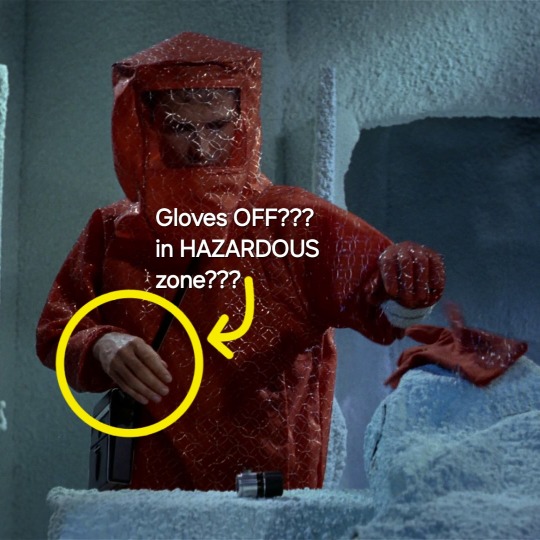
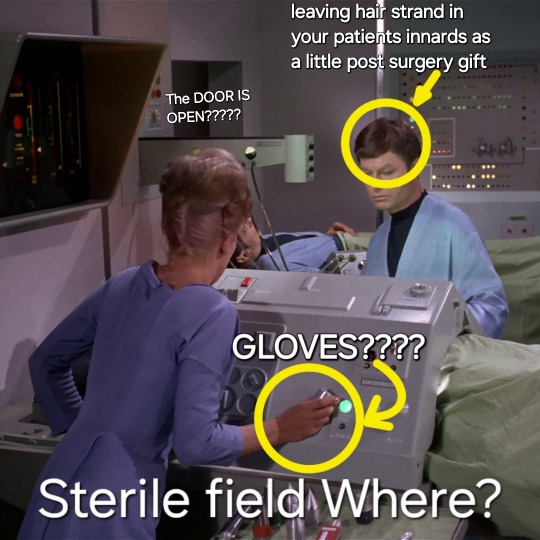

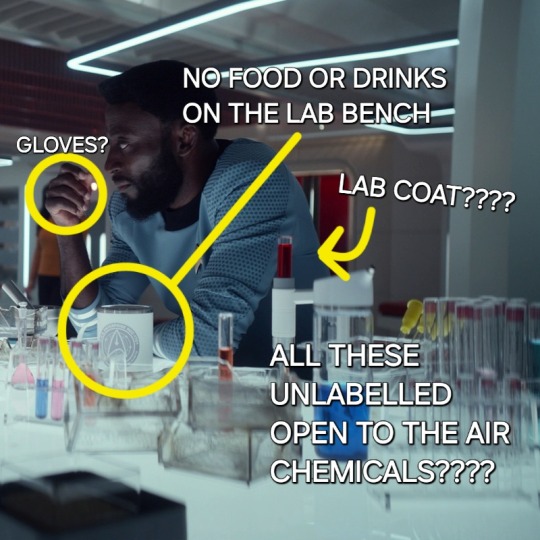
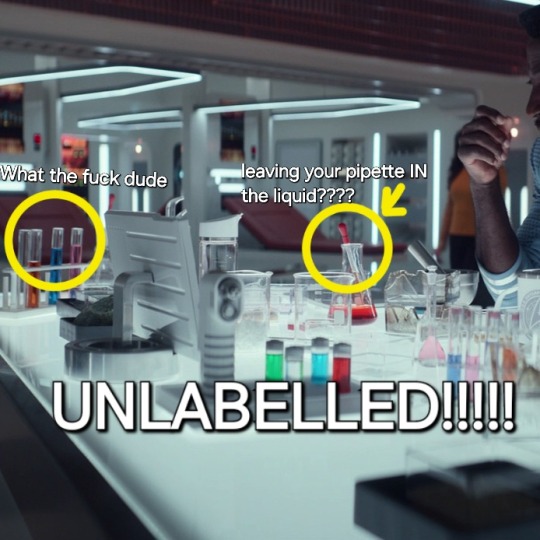
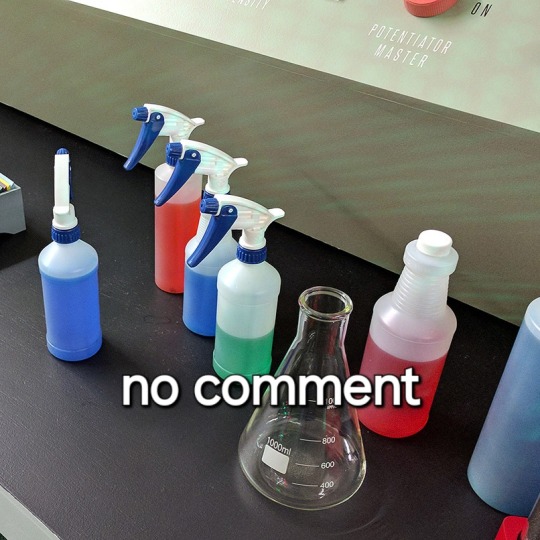
Not to mention WHERE is the fume hood......
And not a single Electronic balance to be seen
#Star Trek#TOS#SNW#Lab safety is important and this complete disregard for protocol in Star Trek is unforgivable#(I don't think I'll ever be able to unsee that pipette just hanging out in the liquid)#And related: Where's the biohazard waste disposal? And biomedical waste disposal since these are medbays?#You can argue they don't need sharps containers because hyposprays but they probably still need broken glass containers#Plus eye wash stations where?#Also M'Benga: some of the stuff you're working on explodes. Please wear safety glasses#And most real world chemicals (at least organic ones you find in a bio lab) are clear liquids or white powders#Although some labs have food coloring to make fun colored liquids in containers for visitors like news reporters
9K notes
·
View notes
Text
Importance of Pharmaceutical Waste Disposal in Tampa and Daytona Beach, FL
Proper collection and pharmaceutical waste disposal in Tampa and Daytona Beach, FL, is not an option. Every healthcare facility, pharmacy, and research laboratory needs to abide by the state's regulations and bodies like the EPA. One may also take a look at the OSHA recommendations to understand how poor handling of pharmaceuticals can affect the health and well-being of people in direct line of such substances and have an increased risk of exposure.
The staff working in such facilities may not be privy to important information related to pharmaceutical products. Pharmaceutical waste usually includes expired medications, unused prescription drugs, and contaminated products. Proper waste management, keeping with the standards, is crucial. Any violation, when detected, may result in severe penalties, with the added risk of the facility losing its license for a specified period.
Another aspect to remember is that different pharmaceutical types must be handled differently. One cannot treat all pharmaceutical wastes identically and jeopardize the health of visitors, patients, and staff at the facility, pharmacy, or lab. Identifying different types of waste and managing each type individually as needed can go a long way in ensuring compliance with regulatory standards.
It is essential to identify and segregate the following types of pharmaceutical waste by using the assistance of a certified waste management company that specializes in the handling, transportation, and disposal of pharmaceutical waste materials: -
· Hazardous Waste
· Non-hazardous Waste
· Controlled Substances
· Cytotoxic Waste
· Pharmaceutical Trace Chemotherapy Waste
Compliance with the standards is necessary for all facilities and stores using or handling such chemical products. It is certainly helpful to be informed about the requirements. There are several state and Federal regulations to note before going ahead and beginning to dispose of such waste. It is further necessary to remember that maintaining compliance with such regulation is not merely a legal obligation but also an ethical or moral obligation of each individual and entity. The laws were formulated to safeguard both public health and the environment. Non-compliance can put one in trouble as strict waste management and disposal laws must be followed perfectly. The following Federal organizations have guidelines in place that must be adhered to without any exceptions: -
· Resource Conservation and Recovery Act (RCRA)- Deals with proper disposal of solid and hazardous waste.
· Drug Enforcement Administration (DEA) Regulations- Includes specific guidelines for handling and disposing of controlled substances.
· Occupational Safety and Health Administration (OSHA) Standards- This concerns safe handling and workplace safety practices.
· U.S. Environmental Protection Agency (EPA) Guidelines- Relates to environmental impact assessments and waste management protocols.
One may also review the recommendations and regulations issued as advisory by the Florida Departments of Health and Environmental Protection.
The concerned facilities, as well as institutions such as schools and care centers, are advised to use the services of a company that excels in providing flawless sharps disposal in Tampa and Daytona Beach, FL.
#pharmaceutical waste disposal in Tampa and Daytona Beach#FL#sharps disposal in Tampa and Daytona Beach
0 notes
Text
Medical Waste Disposal in Tampa: Regulations, Compliance, and Best Practices

Proper medical waste disposal isn’t just a regulatory necessity in Tampa—it’s a critical component of public health and environmental safety. From hospitals and clinics to tattoo parlors and nursing homes, all facilities generating medical waste must follow strict guidelines to ensure compliance with local, state, and federal regulations. This article provides an overview of medical waste disposal in Tampa, covering the essential rules, compliance tips, and best practices to help healthcare providers and businesses stay safe and avoid penalties.
So, whether you manage a hospital or just wonder what happens to used medical supplies, this guide will break down the do’s and don’ts of handling medical waste disposal in Tampa. Let's dive in before things get... well, hazardous.
Understanding Medical Waste: More Than Just Trash
Medical waste includes any waste generated from healthcare facilities, research labs, and similar settings that could pose risks to humans, animals, or the environment. In Tampa, the following are classified as medical waste:
Sharps: Needles, scalpels, and syringes
Pathological Waste: Tissues, organs, or fluids
Infectious Waste: Lab cultures or items contaminated with blood
Pharmaceutical Waste: Expired medications and chemicals
Contaminated PPE: Gloves, masks, and gowns
Improper disposal of these materials can lead to the spread of infections, injuries, and environmental contamination. Tampa’s guidelines ensure that such waste is handled with care from start to finish.
Tampa’s Medical Waste Disposal Regulations
Medical waste disposal in Tampa is regulated by the Florida Department of Health (DOH). Local healthcare facilities must comply with these rules, which are aligned with state and federal laws, including the Florida Administrative Code 64E-16 and OSHA standards. Here are the key components:
Licensing and Permits: Facilities generating medical waste must obtain permits from the DOH. These permits are subject to annual renewals and inspections.
Storage Limits: Medical waste can be stored for a maximum of 30 days before disposal, regardless of whether the container is full.
Labeling Requirements: All waste bags and containers must be properly labeled with the universal biohazard symbol and the generator’s name and address.
Use of Approved Haulers: Only licensed haulers may transport medical waste to certified treatment facilities. Facilities that generate waste must maintain transport logs as proof of compliance.
If this sounds complicated, you’re not alone. Many facilities work with waste disposal experts to navigate these regulations smoothly—because no one wants to accidentally break the law over a bag of used gloves.
Best Practices for Medical Waste Disposal in Tampa
1. Segregate Waste at the Source
Separate medical waste from regular trash to reduce disposal costs and minimize risks. Use color-coded containers (like red bags for biohazardous waste) to make segregation easy for staff.
2. Train Your Employees Regularly
Regular training sessions ensure your staff is up-to-date on disposal procedures. The DOH requires annual training, and it’s a good idea to go beyond the minimum with refresher courses to keep everyone sharp.
3. Monitor Waste Generation Levels
Keep track of how much waste your facility generates to optimize storage and collection schedules. Regular monitoring can also help you identify ways to reduce waste output.
4. Use Licensed Disposal Partners
Partnering with a licensed medical waste disposal service ensures your waste is handled in compliance with Tampa’s regulations. These partners take care of collection, transportation, and disposal, leaving you to focus on your core business.
5. Stay Ahead of Inspections
Maintain proper documentation, including permits, transport logs, and training records, to be ready for inspections at any time. Failing an inspection could lead to fines and even suspension of your permit.
Penalties for Non-Compliance: Avoiding Trouble
Failing to comply with Tampa’s medical waste regulations can result in serious penalties, including:
Fines: Up to $5,000 per violation per day
Suspension of Permits: Non-compliant facilities risk losing their operating permits
Lawsuits: Improper disposal that causes harm can lead to legal action
Avoiding these penalties is as simple as following the rules—but just like filing taxes, it’s easier said than done.
Conclusion: Keep Tampa Safe and Compliant
Proper medical waste disposal in Tampa is essential for protecting public health and the environment. Compliance with Tampa’s waste regulations ensures that medical facilities operate safely and efficiently, while minimizing risks of legal trouble or environmental harm. Following best practices—like segregating waste, training employees, and using licensed disposal partners—will help your facility stay compliant and avoid penalties.
But medical waste isn’t just about following the rules—it’s about safeguarding our community. Ready to learn more about the intricacies of sharps disposal? Be sure to check out our next article, "Safe and Effective Sharps Disposal Solutions in Tampa," to tackle one of the trickiest parts of medical waste management.
0 notes
Text
KNOW THE COMPLETE JOURNEY OF SHARPS WASTE DISPOSAL

Sharps waste disposal is one of the most critical in healthcare waste disposal, know how it works. Sharps waste management can achieve 100% safety only if you are aware of the procedure.
0 notes
Text
Soluciones de eliminación de desechos punzantes, previsión del tamaño del mercado mundial, clasificación y cuota de mercado de las 14 principales empresas
Según el nuevo informe de investigación de mercado “Informe del Mercado Global del Soluciones de eliminación de desechos punzantes 2024-2030”, publicado por QYResearch, se prevé que el tamaño del mercado mundial del Soluciones de eliminación de desechos punzantes alcance 2.44 mil millones de USD en 2030, con una tasa de crecimiento anual constante del 7.8% durante el período de previsión.
Figure 1. Tamaño del mercado de Soluciones de eliminación de desechos punzantes global (US$ Millión), 2019-2030

Según QYResearch, los principales fabricantes mundiales de Soluciones de eliminación de desechos punzantes incluyen Stericycle, Waste Management, Veolia, Remondis, Clean Harbors, Cleanaway, Sharps Medical Waste Services, Daniels Health, Republic Services, Logistics Recycling, etc. En 2023, las cinco principales entidades mundiales tenían una cuota de aproximadamente 40.0% en términos de ingresos.
Figure 2. Clasificación y cuota de mercado de las 14 principales entidades globales de Soluciones de eliminación de desechos punzantes (la clasificación se basa en los ingresos de 2023, actualizados continuamente)

Sobre QYResearch
QYResearch se fundó en California (EE.UU.) en 2007 y es una empresa líder mundial en consultoría e investigación de mercados. Con más de 17 años de experiencia y un equipo de investigación profesional en varias ciudades del mundo, QY Research se centra en la consultoría de gestión, los servicios de bases de datos y seminarios, la consultoría de OPI, la investigación de la cadena industrial y la investigación personalizada para ayudar a nuestros clientes a proporcionar un modelo de ingresos no lineal y hacer que tengan éxito. Gozamos de reconocimiento mundial por nuestra amplia cartera de servicios, nuestra buena ciudadanía corporativa y nuestro firme compromiso con la sostenibilidad. Hasta ahora, hemos colaborado con más de 60.000 clientes en los cinco continentes. Trabajemos estrechamente con usted y construyamos un futuro audaz y mejor.
QYResearch es una empresa de consultoría a gran escala de renombre mundial. La industria cubre varios segmentos de mercado de la cadena de la industria de alta tecnología, que abarca la cadena de la industria de semiconductores (equipos y piezas de semiconductores, materiales semiconductores, circuitos integrados, fundición, embalaje y pruebas, dispositivos discretos, sensores, dispositivos optoelectrónicos), cadena de la industria fotovoltaica (equipos, células, módulos, soportes de materiales auxiliares, inversores, terminales de centrales eléctricas), nueva cadena de la industria del automóvil de energía (baterías y materiales, piezas de automóviles, baterías, motores, control electrónico, semiconductores de automoción, etc.. ), cadena de la industria de la comunicación (equipos de sistemas de comunicación, equipos terminales, componentes electrónicos, front-end de RF, módulos ópticos, 4G/5G/6G, banda ancha, IoT, economía digital, IA), cadena de la industria de materiales avanzados (materiales metálicos, materiales poliméricos, materiales cerámicos, nanomateriales, etc.), cadena de la industria de fabricación de maquinaria (máquinas herramienta CNC, maquinaria de construcción, maquinaria eléctrica, automatización 3C, robots industriales, láser, control industrial, drones), alimentación, bebidas y productos farmacéuticos, equipos médicos, agricultura, etc.
0 notes
Text
Reliable Medical Waste Disposal in Tampa, Florida with ACRS Waste Solutions

For dependable Medical Waste Disposal Tampa Florida, trust ACRS Waste Solutions. Our waste management company specializes in the safe and compliant handling of medical waste, ensuring your facility adheres to all regulations. We provide tailored solutions for healthcare providers, including hospitals, clinics, and dental offices. With ACRS Waste Solutions, you can expect timely pickups, secure transport, and eco-friendly disposal methods. Our commitment to safety and sustainability makes us the top choice for waste management company in Tampa. Partner with us for efficient and responsible medical waste disposal.
#medical waste disposal daytona beach florida#medical waste disposal jacksonville florida#florida biomedical waste program#sharps disposal florida#biomedical waste disposal#medical waste disposal#pharmaceutical waste management#Medical Waste Disposal Tampa Florida
0 notes
Text

#Sharps Container Disposal#sharps container disposal near me#medical sharps container#hospital sharps containers#biohazard sharps container#clinical waste sharps disposal#bloodborne pathogen disposal#sharps container for home use
0 notes
Text
How To Ensure Biowaste Waste Removal in Palm Harbor and Clearwater, FL?
Disposing of the sharp implements properly is imperative. Discarding the needles, scalpels, and broken syringes in the trash can is also a strict no-no. The best way to be rid of them is to comply with the FDA and OSHA standards. Clinics, dental practices, laboratories, and vet care centers use the sharp equipment regularly for treatment and research. Not conforming to the regulations can result in heavy penalties and revocation of the license. Every facility thus needs to be informed about the accepted procedures of sharps disposal in Trinity and Tampa, FL. It is vital to source the right colored container when discarding the sharps. Another thing to keep in mind is the quantity of storage. Filling the container to the brim would be foolhardy and risk injury. Such injuries may become fatal as it facilitates the transfer of blood-borne pathogens to the living body. Disposal of the containers is easy enough. One can contact a service provider that is well-informed about the local and state regulations related to proper disposal. Such providers often have their vehicles to comply with the standards. Contacting them for weekly disposal of filled containers can enable a facility to ensure safety for all concerned.
What are Sharps? Sharp implements that can pierce, puncture, or cut through human flesh are known as sharps. All sharp instruments and tools used on the patients for diagnosis and treatment are regarded as sharps. Some of the most common sharps that must be disposed of according to the state and/or community standards and comply with the FDA regulations include the following:-
· Needles · Syringes · Scalpels · Connection needles · Auto-injectors · Infusion sets · Lancets
Sharps Disposal Containers The FDA categorizes the sharps containers as class II devices! These are subjected to premarket notification (510(k)) requirements.
The containers have to be of a particular design as well. It needs to be manufactured out of hard plastic or metal. The sides of the container should be resistant to punctures, with the bottom and sides of the container leak-proof, too. The management of the facility should ensure sourcing sufficient quantities of sharps containers as approved by the FDA. Moreover, the cleaning staff of medical facilities, laboratories, and pharmacies should check the OSHA regulations for blood-borne pathogens and needle stick prevention before disposing the biohazardous wastes such as sharps.
It is vital to respect the color coding rules related to disposal. The biohazard sharps containing blood and remnants of bodily fluid from the patients must be stored in a red container with the biohazard label displayed prominently.
One may also use yellow containers with a red label indicating their use. The word SHARPs should be visible on the label so there is no error in understanding the purpose.
Proper treatment and subsequent biowaste waste removal in Palm Harbor and Clearwater, FL, must be done according to the standards. It can be ensured by connecting with a company with an excellent reputation for the perfect disposal of such substances without violating rules.
0 notes
Text
Best Grab Lorry Hire Services in Kidderminster
Want to hire an affordable lorry service? Fellows Grabaway provides a full range of grab lorry hire services in Kidderminster and muck away services. It makes no difference whether you need it for a one-time domestic clearance, clearing a building, or for demolition sites. For additional information, connect us: https://www.fellows-grabaway.co.uk/index.php/grab-hire
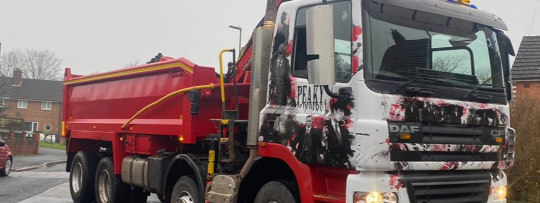
#grab lorry#grabwagon#grabwagonhire#waste disposal#loryhire#commercial waste#aggregates#sharp sand#supply of aggregates#sand
0 notes
Text
Advantage Medical Waste Solutions : Medical Waste Disposal
There are many methods of Medical Waste Disposal, biomedical waste is not disposed of in the same way, and there are different disposal companies that use different methods for biomedical waste, so many methods include autoclaving one of them, this autoclave process involves autoclaving steam sterilization by simply entering hot steam for a clearly defined period of time.

But at the end of the process, the microorganisms are destroyed during this process.
1 note
·
View note
Note
can you write a drabble where you and joel try the mating press position please?
anon, the answer is holy jesus yes. you don’t understand the way this ignited something inside of me. i’m writing this instead of packing.
══════════════════════
pretty prey
Joel Miller x afab!reader
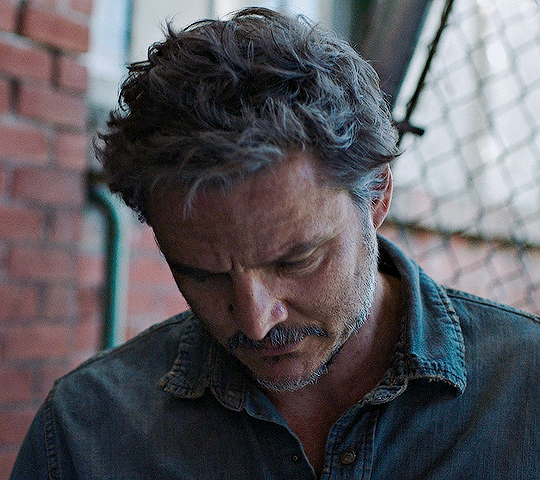
Warnings: MDNI. Porn, no plot. No mention of age, race, or body type. Use of pet names. Joel is aggressive but not like mean aggressive. Low key predator/prey kink. Unprotected p in v. Breeding kink. Cream pie.
Word Count: 925
a/n: not even slightly proofread, so pls let me know if it's a disaster.
══════════════════════
Sex with Joel Miller was a marathon, certainly not a sprint.
You learned that fact fast, and you learned it the hard way. He didn’t just want you, he craved you. He was insatiable, lasting longer than any man you had ever encountered, which left you reeling in a bliss you never knew existed.
Like now, while he’s got your back pressed into the mattress, rutting into you with his hips nestled between your thighs, already pulling two orgasms from you with just his fingers and lips alone.
Your legs shake around his torso, arms flopped back onto the pillows, the entirety of you feeling like clay, malleable at his will. Through the squint of your heavy eyelids, you can see the way he consumes you. Dark eyes, sweat lingering at his temples. His hands bruise their prints into your thighs, every thrust of his hips curving his cock into you where it touches the soft, sweet little spot inside of you.
“Joel,” you whine, and he’s growling in response. You’re limp, body at his disposal, walls involuntarily clenching around him. He loves you this way; helpless, begging, all his.
“I know, baby,” he purrs, and he’s pushing your thighs from his hips back against your chest. “I just want’ya to feel me real deep. Right in here-” he takes one of his hands off your thigh to run across your lower belly, the pressure along with the invasion of his cock making you shudder. He clocks your reaction, flashing a sinful smirk down at you. “You want that, don’t you, sweet girl? Wanna feel me all the way in your tummy?”
You can’t find the words, but are nodding up at him frantically. The obscene sound of your slick around his cock echoing through the room.
He doesn’t waste any time. Pulling most of the way out of you, he pins your thighs to your chest. Then, he’s propping himself up on his feet, his own thighs squeezing against yours to keep him steady, before slicing back into you. The entire weight of him at his disposal.
You’re gasping at the new angle, hands flying from their once lax position to grip his shoulders. Jaw slack, eyes a daze as you peer up at him. Like the flip of a switch, he’s an animal above you. Working himself into you at an unruly pace that has you seeing stars. He’s reaching a point inside of you that you didn’t know existed, your entire being consumed by him. Every thrust sends a sharp sound of slapping skin through the room, accompanied by a litany of your own, weak moans.
Tears spring to your waterline as he bruises into your cervix, the grunts and murmurs of that’s it, take it baby, can see the outline of my cock against your tummy all indication of his enjoyment.
And all you can do is take it. Pain blurring into the pleasure. But before it becomes too unbearable, his reaching a hand between your bodies, thumb finding your sensitive clit. He paints over it in calculated strokes, and chuckles when he feels you flutter around him again, back arching off of the mattress and inviting him further into your aching pussy.
“Tell me how it feels, baby,” he grunts in between thrusts, growing sloppier the tighter you clench onto him. “Tell me how good my cock feels splittin’ you open.”
“S-so deep, Joel.” Your eyes are at the back of your skull, unable to maintain their focus as you feel the coil in your stomach on the verge of snapping. You’re not sure if it’s because of your budding release or because Joel really has succeeded in breaking you.
His thumb abandons your clit then, eliciting a whine. Instead, he is reaching for one of your hands, tearing it off his shoulder, and pressing it just below your belly button.
Like a deer in headlights, your eyes go wide again to find him leering down at you, damp lips parted and hair sticking to his forehead. He is fully mounted on top of you, and you cannot help but press the hand he guides further into your flesh, feeling the bulbous tip of his cock bulging from beneath the flesh.
“You feel that, pretty girl?” he quips, having his answer by the sheer drunk look in your eyes. There is something so obscene, so vulgar about feeling him through your skin. It has your toes curling.
“Joel, I’m—I’m gonna-”
The quickening of his pace cuts you off, words reduced to pathetic whimpers. You can feel your own wetness pooling between your bodies, the headboard behind you banging relentlessly into the wall.
“Come on my cock, pretty girl. Come so I can fill you all the way up.” His coaxing is enough to bring you just to the edge, the brush of his fingers against your clit returning, and sending you over.
You’re clutching your stomach the entire ride through your release, the way your body melts into the will of his demolition enough to bring Joel to his own. The sounds he elicits are damn near snarls, absolutely ravenous as he strokes into you. You feel the familiar warmth inside of you when he takes a final thrust forward, keeping himself fully enclosed in your walls as he coats them with his seed.
And when he’s finished, he remains sheathed inside of you. Collapsing onto your chest, allowing your legs to be released from their prison against you. Keeping you plugged up with his cock and his come, branding you with the most sacred part of him.
Reminding you who you’ll always belong to.

#joel miller#joel miller drabble#joel miller smut#request#the last of us#joel miller x reader#joel miller requests#tlou#pedro pascal
2K notes
·
View notes
Text
Florida Biomedical Waste: What Healthcare Facilities Need to Know About Safe Disposal

Managing Florida biomedical waste isn't just a task—it’s a responsibility. With strict regulations in place, healthcare facilities must ensure proper disposal to protect public health and the environment. From hospitals to clinics and even veterinary practices, understanding how to safely handle biomedical waste is critical. Because, let’s face it, the last thing anyone wants is an unexpected encounter with a biohazard outside the clinic.
In this article, we’ll explore the essential practices for managing biomedical waste in Florida, keeping facilities compliant, and ensuring the safety of everyone involved—without sacrificing a sense of humor.
What is Biomedical Waste in Florida?
Biomedical waste refers to any waste that contains infectious or potentially infectious materials. This includes blood-soaked gauze, used needles, and other items that can transmit diseases if improperly handled. Florida biomedical waste management ensures these materials are carefully collected, stored, and disposed of to prevent contamination.
Biomedical waste is divided into several categories, such as:
Sharps waste: Needles, syringes, and scalpels.
Infectious waste: Blood and bodily fluid-soaked items.
Pathological waste: Human tissues or organs.
Pharmaceutical waste: Expired or unused medications.
Florida healthcare facilities must segregate biomedical waste from general waste to prevent contamination risks. As they say, “Don’t mix regular trash with hazardous waste—because no one wants to deal with that kind of surprise during garbage day.”
Florida Regulations for Biomedical Waste Disposal
The Florida Department of Health has set strict guidelines for the management of biomedical waste to ensure public health and safety. Failure to comply with these regulations can result in penalties and environmental hazards. Lucky for healthcare providers, these rules are straightforward if followed properly.
Key Regulations to Know:
Proper Labeling and Packaging:
All biomedical waste must be placed in red, leak-proof bags with the biohazard symbol.
Containers for sharps should be puncture-resistant and properly labeled to avoid needle-stick injuries.
Storage Limits:
Biomedical waste cannot be stored for more than 30 days at room temperature.
Facilities need to ensure that waste is stored securely and away from public access.
Use of Licensed Disposal Services:
Only licensed biomedical waste disposal companies are allowed to collect and transport hazardous materials.
Ensure that your disposal provider complies with both state and federal guidelines.
Documentation and Compliance Records:
Healthcare facilities must maintain detailed records of waste disposal activities.
These records should be readily available for audits or inspections—because no one enjoys a last-minute scramble to find paperwork!
Best Practices for Safe Biomedical Waste Disposal in Florida
Staying compliant with Florida biomedical waste regulations isn’t just about following rules—it’s about creating a safe environment for staff, patients, and the public. Here are some best practices to ensure safe disposal:
1. Waste Segregation at the Source
Sorting waste at the point of generation is critical. Keep sharps waste, infectious materials, and pharmaceutical waste in separate, labeled containers.
Tip: Don’t let sharps mingle with regular trash—it’s like mixing up your coffee and tea; no good comes from it.
Use clearly marked bins to make segregation easier for staff.
2. Regular Training for Staff
Make sure your staff understands the importance of handling biomedical waste properly. Provide training on how to use PPE, handle sharps, and follow waste protocols.
Refresher courses help ensure compliance, especially with evolving regulations.
Consider adding a little friendly competition—“Who can follow waste protocols perfectly for 30 days?”
3. Partner with a Reliable Biomedical Waste Disposal Company
Not all disposal companies are created equal. Choose a licensed provider that meets the highest standards for handling biomedical waste in Florida.
Look for a company that offers flexible pickup schedules and emergency services.
Bonus: They’ll handle the dirty work, so you don’t have to.
4. Monitor Waste Generation Patterns
Keep an eye on how much waste your facility generates to optimize disposal schedules and avoid overflow.
Reducing waste generation where possible can save costs.
Try tracking your waste metrics—it’s like counting steps, but for trash.
5. Maintain Clean and Secure Storage Areas
Ensure that biomedical waste storage areas are clean, organized, and restricted to authorized personnel.
Label bins and containers clearly to avoid confusion.
Secure storage areas prevent unauthorized access and environmental contamination.
Common Challenges in Managing Biomedical Waste in Florida
While the rules are clear, managing biomedical waste in Florida can still present some challenges. Here are a few common hurdles healthcare facilities may face—and how to overcome them:
Staff Turnover and Training Gaps
Frequent staff changes can lead to gaps in waste handling knowledge.
Solution: Provide regular training sessions and assign a compliance officer to oversee waste management.
Overfilled Waste Bins
Overflowing bins are both unsightly and unsafe.
Solution: Monitor waste levels and schedule pickups before bins reach capacity.
Compliance Fatigue
Keeping up with ever-changing regulations can feel overwhelming.
Solution: Partner with a knowledgeable waste disposal service to stay ahead of regulatory changes.
Why Safe Disposal of Biomedical Waste in Florida Matters
Proper biomedical waste disposal in Florida isn’t just about following the law—it’s about protecting public health and the environment. Improper disposal can lead to serious consequences, including the spread of infections and environmental contamination.
By adhering to regulations and following best practices, healthcare providers ensure that their waste management processes contribute to a healthier community. After all, healthcare is about healing, not harming—and that includes keeping hazardous waste where it belongs.
Conclusion
In Florida, healthcare facilities have a responsibility to manage biomedical waste safely and efficiently. By understanding the types of waste, following state regulations, and adopting best practices, providers can stay compliant and ensure public safety. Managing biomedical waste doesn’t have to be complicated—especially with the right team and processes in place. To learn more about the environmental impact of biomedical waste and how facilities can adopt sustainable practices, continue to the next article in our series: How Biomedical Waste in Florida Affects Public Health and the Environment.
0 notes